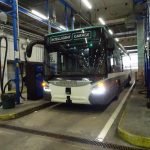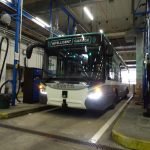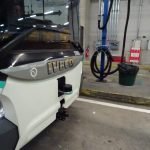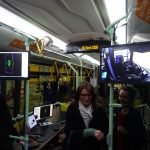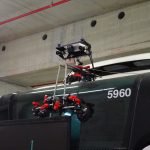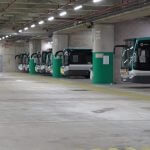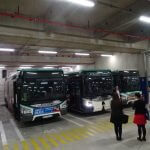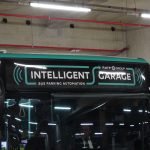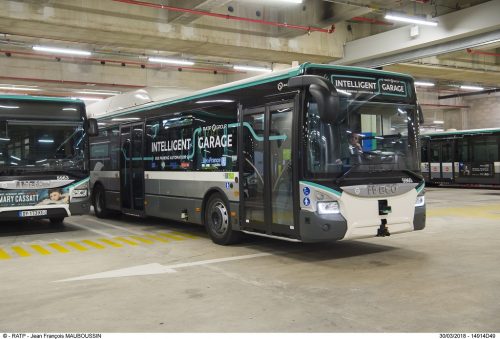
RATP is vigorously pursuing the development of autonomous vehicles as Jonathan Taylor found out on a recent visit to Paris
The robotic future world of autonomous vehicles is getting closer, with perhaps some inevitable and unfortunate hiccoughs. There have been some accidents and a recent tragic death as autonomous vehicles move away from pure and secure test environments and get out into the real world of streets and unpredictable humans.
Provided safety issues can be overcome, the benefits should be lower operating costs, greater efficiency and, because of the efficiency gains, greener transport. Who knows, the cost of travel to the consumer may even drop.
RATP (Régie Autonome des Transports Parisiens) in Paris has presented a range of innovative autonomous technologies it’s working on in the bus and rail industries to journalists. It’s the principal operator of buses in the centre of the French capital and is 100% state-owned. Over coming years the bus operating market in Paris will open to competition. RATP sees itself as continuing to compete for routes in the future and that will mean big changes in the company, but right now it also has a deep focus on innovation in fuel and operation technology.
After meeting RATP staff at the Eurostar Gare du Nord terminal, the first demonstration was an all-electric bus ride to the Lagny depot (one of 26 depots operating 4,700 buses run by RATP to serve the Paris region). The bus had no external noise generation system to warn other road users of its presence, but the journey was smooth and quiet with only the whirring noises of ancillary motors to disturb the peace.
Lagny is a modern facility on an old site. RATP pursues a policy of treating its city depots as full-scale urban regeneration projects. This means whenever a depot is redeveloped, it often becomes a mixed-use site. At Lagny the bus depot occupies three floors, two of them below ground. A further lower floor is a car park and the floors above now house offices for the Interior Ministry. These non-bus activities generate revenue for RATP. On other depot sites they have upper floors which have flats and open terrace areas. The company’s own staff often have housing provided on site which helps shift workers, cuts out the commute to work and its cost, which turns into more leisure time at home. It also provides the opportunity for staff to live in an expensive city area which would otherwise be financially out of reach.
At the Lagny depot, a corporate presentation made it clear that the company is renewing its fleet resulting in a split of electric (67%) and natural gas (33%) propulsion by 2025. Iles-de-France-Mobilites (the Paris equivalent of London’s TfL) and RATP have put the first purchase of 1,000 electric vehicles out to tender in January 2018 for 2020 deliveries and it is likely that three manufacturers will supply a third of that total each. Nicolas Cartier, Program Director of Bus 2025 expects the vehicles to cost €400-500,000 each. The vehicles must be able to operate for 200km on a single depot overnight charge and be carrying up to 90 passengers. In addition, a battery life guarantee of seven to eight years from manufacturers is going to be required.
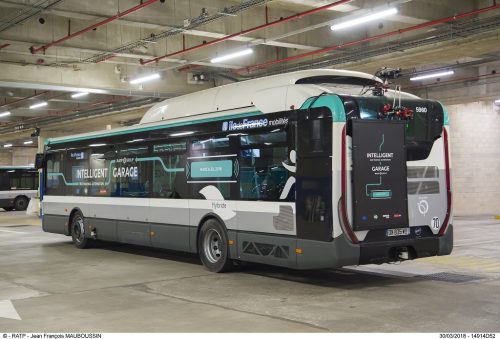
Nicolas was clear that they do not see a place for ‘opportunity charging’ systems spaced along routes within the city as the infrastructure disruption and cost would be too great compared to depot charging, hence the minimum 200km single charge range requirement.
Having said that, there is an obvious, tricky and complicated depot conversion program to be carried out which needs to be done without disrupting operations. Twenty-five depots will need to be upgraded. Seventeen will each need a 12MW grid connection and the other eight will become biogas depots. Each depot will take two years to convert.
Interestingly, RATP Paris has 800 hybrid buses. These will simply be retired as they reach their 15th anniversaries and not replaced. The age of hybrid buses is over for Paris.
In the future, RATP sees a possible role for 18m articulated electric buses and will be looking to trial such vehicles when and if they become available.
RATP has 2,000 maintenance staff working on buses. They estimate that post-conversion to a fully electric and gas fleet, that number will reduce by 20%.
After the presentation, it was time to look at the Lagny depot itself which is working towards full Autonomous Vehicle (AV) operation. Aboard an autonomous 12m hybrid Iveco Urbanway (Iveco is one of the partners in this program), we had a driver visibly not controlling the vehicle and a whole bank of computers and screens showing progress as we drove around the depot between floors. During the drive we encountered other buses. The AV detected them, tracked them and avoided them, changing speed and direction as needed. The show piece was a reverse park of the bus between two other 12m buses with only a standard bay-width to manoeuvre into. This was smoothly and successfully carried out with a running commentary provided by Clément Lucchesi, the Project Manager for this engineering innovation. He told me that the bus can actually manoeuvre with only a one centimetre tolerance either side.
The bus bristles outside with a range of detectors and cameras. It primarily uses LiDAR (Light Detection and Ranging) technology to sense its surroundings against a pre-loaded picture map of its depot. (You can see this system working on the video). RATP had to have graffiti murals painted on the depot’s concrete walls to give them individual characteristics thus enabling the vehicle to determine its exact location without GPS (not available underground).
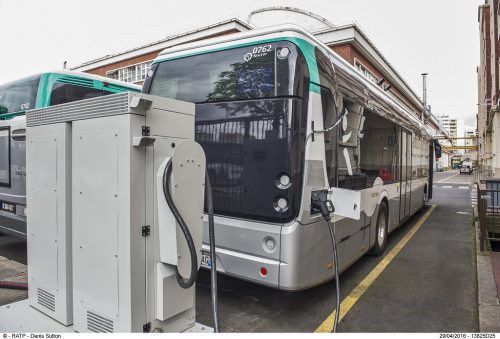
RATP is testing AVs on the surface as well as deep inside its depots. After the impressive underground depot demonstration, there was another one of an autonomous ‘last-mile/first-mile’ vehicle currently being live-tested on a mixed urban and green park route at the Vincennes floral park.
There are currently three manufacturers of this type of smaller autonomous public shuttle vehicle in France, the one being use in the test being a fully electric EasyMile EZ10 capable of carrying 12 passengers at up to 10mph. A pair of these are carrying passengers from a Metro station to the park along what is a 1.5km route.
Driverless and virtually silent operation means the detection systems cause bells to ring to warn pedestrians and cyclists when the vehicle approaches. Apparently the shuttle can stop extremely quickly from its low speed, but this was not demonstrated. There are still some technical issues to overcome as its technology is not yet sensitive enough to differentiate falling leaves in front of the cameras and LiDARs, for example, so immediate emergency braking isn’t required! However, the shuttles are running and attracting a great deal of interest.
Just to round things off, the RATP team showed their fully automated Metro Line 1 which runs driverless for 16.6km. The line used to require 250 drivers. Now there are none, but 40 former drivers are now supervisors in the control centre offices. The automation works with only occasional glitches as passengers attempt to do something outside the automation ‘rules.’ There is full separation of trains from platform by glass screens that only allow access to trains when appropriate. It was a major operation to convert all 26 stations to automation without any service disruption.
So, are autonomous vehicles here to stay and appearing on a route near you soon? RATP are certainly working hard to make that a reality.
You can view the video of the autonomous bus in action on our YouTube channel.




